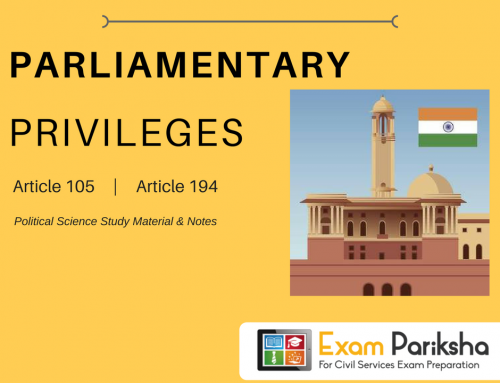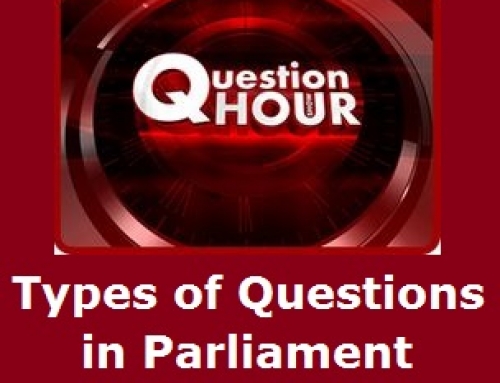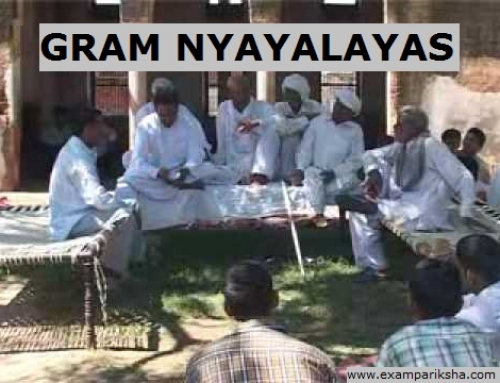The Parliament of India has two Houses– Rajya Sabha and Lok Sabha. The Rajya Sabha is also known as Upper House, representing the States of India. The Lok Sabha is known as Lower House, it is also called popular House because it represents the people of India.
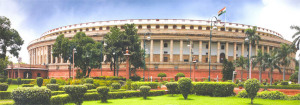
Rajya Sabha: Membership and Election
- First point to be noted about Rajya Sabha is that it is a permanent body as it cannot be dissolved, but one-third of its members retire every two years.
- The membership of the Rajya Sabha cannot exceed 250.There are at present 245 members in Rajya Sabha.
- Out of these 250, the President nominates 12 members on the basis of their excellence in literature, science, art and social service and the rest are elected.
- Since Rajya Sabha represents States in Indian Union, its members are elected by the State legislatures.
- Election: The elected members of the States’ Legislative Assemblies elect the Rajya Sabha MPs on the basis of proportional representation through the single transferable vote system according to their state quota.
- All the States do not send equal number of members to the Rajya Sabha. Their representative number is decided on the basis of population of the respective State. Therefore, the bigger State gets higher representation and the smaller ones have lesser representation.
- Delhi Assembly sends three members to Rajya Sabha and Puducherry sends one member. All other Union Territories do not get representation in the Rajya Sabha.
Qualifications:
The qualifications required for becoming a member of Rajya Sabha are as follows:
- He/she should be a citizen of India and of minimum 30 years of age.
- He/she should take an oath or affirmation stating that he will bear true faith and allegiance to the Constitution of India.
- Any Indian citizen can be the Rajya Sabha elections irrespective of the State in which he resides where elections are to be conducted through open voting system.
Tenure:
- Every member of Rajya Sabha has a tenure of six years.
- Since one-third of its members retire after every two years, the house gets new members in every two years.This system of election ensures continuity in the working of Rajya Sabha.
- The members of Rajya Sabha are entitled to re-election. But, a member elected for a mid-term vacancy will serve the remaining period only.
Presiding Officials of Rajya Sabha:
- The Vice-President of India is the ex-officio Chairman of the Rajya Sabha.
- He presides over the meetings of Rajya Sabha in the capacity of Chairman.
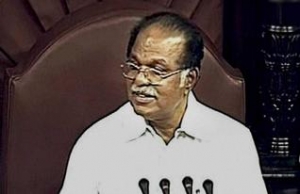
Deputy Chairman: Prof. P. J. Kurien
- As the Vice-President is an ex-officio Chairman and not a member of Rajya Sabha, he is normally not entitled to vote.
- However, he can vote in case of a tie. So he has a casting vote.
- In the absence of the Chairman, the Deputy Chairman, who is elected by the members of Rajya Sabha from amongst themselves, presides over the House.
- Removal: The Deputy Chairman can be removed by a resolution passed by a majority of members of Rajya Sabha. But the Chairman (Vice-President) can only be removed from his office by a resolution passed by a majority of all the members of Rajya Sabha and , agreed to by the Lok Sabha.
- Tie: means a situation in which there are equal vote cast in favour and against a bill or resolution. In such a situation the presiding officer may exercise a casting vote in favour/against to break the tie.
Quorum of Rajya Sabha:
Quorum is the minimum number of members of an assembly that must be present at any of its meetings to make the proceedings of that meeting valid. The quorum to constitute a meeting of Rajya Sabha is one-tenth of the total members of the House, i.e., 25 members.
Lok Sabha: Membership and Election
- Unlike Rajya Sabha, Lok Sabha is not a permanent body. It is elected directly by the people on the basis of universal adult franchise.
- The maximum membership of Lok Sabha is 550. Of these 550 members, 530 are directly elected from the States while 20 members are elected from the Union Territories.
- Also, the President can nominate two members of the Anglo-Indian community if he feels that the community is not adequately represented in the House.
- Certain number of seats have also been reserved for Scheduled Castes and Scheduled Tribes in the Lok Sabha which implies that only persons belonging to SC/ST can contest from the reserved constituencies. ( It should be noted here that we have joint electorate and all the voters of the reserved constituency vote. There is no separation of voters in terms of caste or tribe).
- The representation to the Lok Sabha is based on population. Therefore UP sends 80 members whereas smaller States like Mizoram, Nagaland send just one representative each to the Lok Sabha.
Qualifications:
Any Indian citizen is eligible of becoming a member of Lok Sabha if he/she fulfils the following qualifications:
- He/she should be not less than 25 years of age.
- He/she should take an oath or affirmation that he holds true faith and allegiance in the Constitution and that he will uphold the sovereignty and integrity of India.
- He/she must be registered as a voter in any Constituency in India.
- Person contesting from the reserved seat should belong to the Scheduled Caste or Scheduled Tribe.
Tenure:
The normal term of Lok Sabha is five years. But the President, can dissolve it before the expiry of five years term on the advice of Council of Ministers. Also, in the case of national emergency, the term of Lok Sabha can be extended for one year at a time. But this should not exceed six months after the emergency is over.
Presiding Officials of the Lok Sabha:
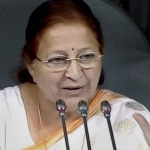
Speaker of 16th Lok Sabha: Sumitra Mahajan
- The presiding officer of Lok Sabha is known as the Speaker. The conduct of business in Lok Sabha is the responsibility of the Speaker.
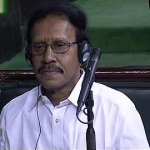
Deputy Speaker: M Thambidurai
- The members of the House elect him/her after the new Lok Sabha forms.
- He/she remains in the office of the Speaker even after Lok Sabha is dissolved till the next House elects a new Speaker in his/her place.
- In the absence of the Speaker, a Deputy Speaker, who is also elected by the House presides over the meetings.
- Removal: Both the Speaker as well as the Deputy Speaker can be removed from office by a resolution of Lok Sabha passed by a majority of the members of the House.
- Some of the powers and functions of the speaker are mentioned below :
- The basic function of the Speaker is to preside over the house and conduct the meetings of the House in orderly manner. No member can speak in the House without his/her permission.
- He/she may ask a member to finish his speech and in case the member does not obey he/she may order that the speech should not be recorded.
- All the Bills, reports, motions and resolutions are introduced with Speaker’s permission.
- He/she puts the motion or bill to vote. He/she does not participate in the voting but when there is a tie i.e. equal number of votes on both sides, he/she can use his casting vote.
- His/her decisions in all parliamentary matters are final. He/She also rules on points of order raised by the members and her decision is final.
- He/she is the custodian of rights and privileges of the members.
- He/she disqualifies a member of his/her membership in case of defection.
- He/she also accepts the resignation of members and decides about the genuineness of the resignation.
- In case of joint sitting of Lok Sabha and Rajya Sabha, the Speaker presides over the meeting. This highlights superiority of Lok Sabha over the Rajya Sabha.


